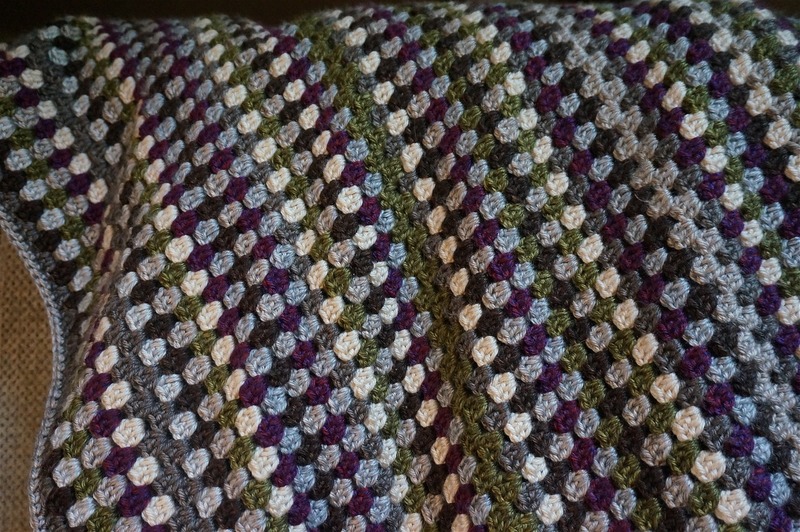Do you know how to wash a yarn blanket properly? The yarn in blankets has delicate fibers, so you must treat it with utmost care.

In this case, the appropriate procedure is hand washing, gentler in comparison to machine wash.
Keeping yarn blankets clean is challenging because there is a risk of stretching the fabric when you wash.
This article will guide you in making the right choices for your blanket. Check out the guide below for gentle hand washing.
Types Of Yarn
Not every ball of yarn is created equal. There are many kinds of yarn made from plants or animals, natural or synthetic.
Perhaps, the three most common are wool, cotton and acrylic.
Wool is the most popular of all three, used especially during winter. For some people, wool can cause itchiness in the skin but never trigger an allergic reaction.
Still, it depends on the type of wool.
Farmers typically harvest virgin wool from the fleece of a sheep instead of recycling used garments.
Merino wool, in contrast, is exquisitely soft and doesn’t irritate the skin. During cold seasons, knitters delight in making scarves and sweaters from the latter.
Cotton grows in hotter climates, a breathable fiber to match the scorching heat of Summer.
Unlike other yarn fibers, cotton can absorb water more than its weight, 27 times over. As such, it is good for absorbing sweat, too.
Strong and durable, cotton is great for colorful and textured blankets. Cotton being the most widely used natural fiber is no surprise.
Aside from being lightweight, it drives the heat away, making it comfortable to wrap yourself with.
Polyester, nylon and acrylic all fall into the category of synthetic fibers. Although cheaper, they tend to last longer. You can even wash them on the washing machine.
Next to natural fibers, synthetic ones fall short in terms of breathability. On the plus side, however, they can substitute for wool.
You can frequently wash synthetic or “novelty” yarns without causing significant damage.
Tips On How To Wash A Yarn Blanket
- Before washing, treat stains by pouring a drop of liquid detergent directly on the spot. Let it rest for some minutes before gently rubbing it in a circular motion.
Rinse until you notice the stain fading away.
- Once the blanket is submerged in water, knead the blanket in sections. Blankets are big and hard to manage.
Twisting the blanket while washing could deform the fibers, so only press gently.
- There shouldn’t be an accumulation of soap suds in your tub. If there is, squeeze out the soapy water.
You can then drain the wastewater and replenish it with a cold, fresh one.
After figuring out the type of yarn used in your blanket, you can now proceed to wash. Hand washing is tried and tested to be delicate, both to the blanket and your hands.
Hand washing guide
- Step #1. Choose a mild detergent
- Step #2. Soak the yarn blankets
- Step #3. Proceed to hand washing
- Step #4. Rinse blankets in cold water
- Step #5. Wrap in a towel to remove moisture
- Step #5. Hang blankets to dry
Should I wash with warm or cold water?
When you wash the blanket and when you rinse, always use cold water.
Although cotton and synthetic fibers can handle fluctuations between hot and cold, natural ones like wool have a low tolerance.
The truth is, not all stains respond well to warm water.
In general, cold water doesn’t cause shrinkage and fading, preserving the blankets.
Fibers tend to wear out over time, and washing excessively can speed up this process.
Wool is especially sensitive to heat, and using warm water can damage it in the long run.
How should I iron acrylic blankets?
Iron only when it’s necessary. If you have no choice, then do so with the lowest temperature in the iron settings.
Do not iron directly, and use a pressing cloth to lessen the heat applied to the fibers.
Be warned that any damage is irreversible once you discover a hole in the spot where you ironed.
Yarn blankets have fiber strands that are susceptible to heat. Even little exposure can burn and melt the fibers entirely.
How often should I wash wool blankets?
It would help if you prolonged the washing sessions for wool blankets.
Mind that every time you clean it, the fibers take damage, however acute.
If you have many blankets made of yarn, make sure to wash them in batches to keep the color and deterioration consistent.
To avoid unnecessary wear and tear on the woolen blankets, you can use a soft-bristled brush to remove dust on the surface.
Also, every time you use the blanket, hang it at room temperature to dry.
Lastly, when you do so, do not expose the blanket to direct sunlight.
Conclusion
You have learned how to wash a yarn blanket. Of course, for any blanket to last longer, you must take good care of it.
Always consult the care label of the yarn to learn about the proper way of washing blankets.
